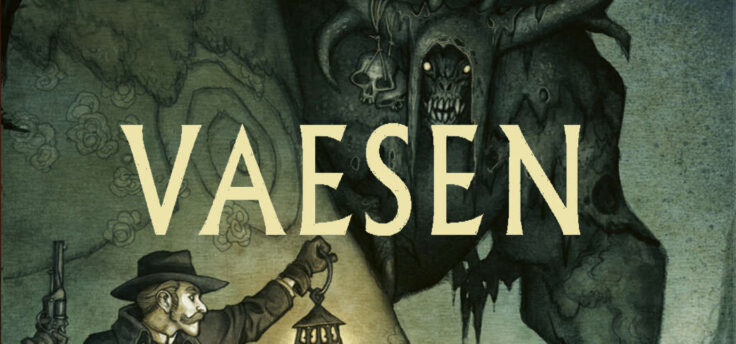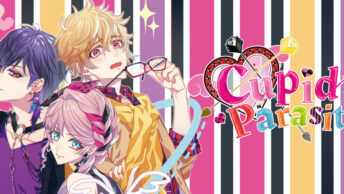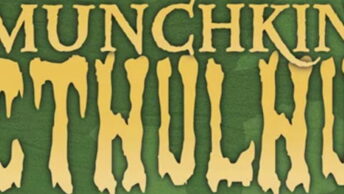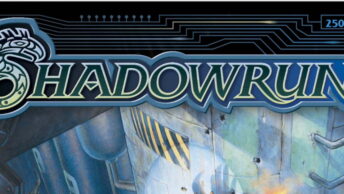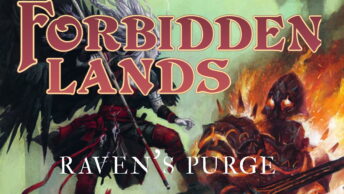Never knew a gnome could be this scary
Free League
Genre: Tabletop RPG
Developer: Free League Publishing
Publisher: Free League Publishing
Release date: 9 July, 2020


Creatures from folklore has been a staple in RPGs since the very start. Most of the early monsters in D&D were heavily inspired by European folklore and myths, filtered through the fantasy tropes of the era that in turn were created by authors such as J.R.R. Tolkien and Robert E. Howard. But few RPGs actually go in depth with these creatures, and portray them like they actually were portrayed in past centuries, instead choosing to treat them more like just another monster.
Vaesen is an exception to this rule. It’s a game about the creatures from Nordic folklore, but the creatures are not just mindless monsters to be killed or obstacles to be overcome. This is a game about the place of these creatures in a changing North, and about the roles they play, or played in the lives of people living in it.
Vaesen is an investigative horror RPG, where the players are confronted with the creatures of folklore, and try to deal with them, be it peacefully or forcefully. It’s a game using the Year Zero rule engine seen in most of Free League’s games, be it Mutant: Year zero, Alien or Tales from the Loop.

Setting
The 19th century was a time of rapid change in the Nordic countries. While still mostly agrarian economies trains are seen travelling between the major cities, factories are being built and people are leaving their old villages and towns in order to move into the big cities, seeking a better life. The industrial revolution has reached the Nordic countries, and with it comes vast amounts of wealth to those who have the means to get it, and abject poverty to many of those who don’t. Slums are starting to appear outside the big cities where the workers live in cramped conditions and diseases can spread easily.
It’s also a time of great scientific progress. New medicines are able to cure illnesses that would once have been fatal, and the earl vaccines against diseases such as smallpox save thousands of lives. Fumbling steps are also taken towards taking care of those who are mentally unwell, though the methods used are often cruel and don’t necessarily have the intended effects.
There’s also big differences between regions. While Stockholm, Gothenburg and Upsala might all see big factories being built, centers of learning being founded or expanded and hospitals relying on (for its time) modern medicine treating the sick, go further inland, and to the north and it might seem like you’re travelling centuries back in time, where people are still ploughing the fields with oxen or workhorses, and leave a bowl of porridge out for the local nisse (house/barn gnome) to eat.
The north is a place of great contrasts, the gap between the rich and the poor is becoming ever more evident, and the difference between the rural and the urban is increasing. The sparse population and the vast forests often means that information and innovation spread more slowly to remote areas than in many other European nations of the time. Where in England you would never live far from a factory or a train track, in Sweden or Finland there would still be those who would just be vaguely aware of these things.
The Vaesen and Those Who Can See Them
Vaesen are creatures from folklore, creatures that people thought were real, or at least told their children were real, because it served a purpose. In a time when the vast woods really were dangerous a warning about staying of the woods made sense, as did warnings of pre-marital sex before reliable contraceptions. And when the church was a central part of a community telling those living there that it protected them from the evils of the world was convenient. If you look carefully enough at almost any creature from folklore it’s either representing something dangerous, or something that should be encouraged. The Nordic countries were no exceptions here and it’s not a coincidence that many of the creatures fear Christian symbols, and were related to either the forests or water, two things that there are no shortages of in the cold north.

Times are changing though, and old customs are being replaced by newer ones. The vaesen of old are seeing their homeland being ravaged by machines, the once tranquil forests are now crisscrossed by rails which carry noisy steam engines and the people who used to know how to placate them are either moving away, or no longer believe in the old ways. At the same time the cities are becoming crowded and that has the potential to attract attention from unwanted sources.
Most vaesen are able to remain unvisible to people, only showing themselves when they want or absolutely need to. Even though they’re invisible they can still have an effect on the world. The beautiful music played on the violin held by the Neck/Näcken can still be heard coming from the streams and rivers, and the large sea serpents can still capsize ships and devour their crew. Vaesen are not usually evil though, and their actions are often rooted in something other than malice, even if the results of them can at times be really bad. A village might have decided to build a church on top of a hill, in sight of where a few trolls live and the trolls, who are usually not able to handle Christian symbols, are now angry because they need to either tear down the church or leave their homes
In this world there are those who are able to see that which most are unable to. People who have “the sight”. For most some kind of traumatic event will have awakened the sight in them, and they are now capable of seeing the vaesen for what they really are. Over the centuries people with the sight have banded together, some wanting to help the vaesen and know why they act the way they do, others have been more interested in killing them, or at least getting rid of them. But right now, when they’re needed the most, the largest group who used to gather information on vaesen and who knew how to deal with them, have disappeared.
There are 21 vaesen listed in the book, which might not seem like much, but each one gets two pages of illustrations and descriptions, and you can easily build an entire adventure around each one of them. There are also guidelines for creating your own types, and a few examples of similar creatures from folklore from around the world. The vaesen that are in the book includes creatures like trolls, vaettir (roughly goblins) and werewolves. Giving too much information about them here would spoil some of the fun of actually encountering them though.
The Rules
The rules in Vaesen are similar to those in most of Free league’s other games (not including Symbaroum, which was written by Järnringen before they were absorbed into Free League). If you’ve played Mutant, Alien or Tales from the Loop then the core should seem immediately familiar. In terms of complexity Vaesen is on the lower end compared to other games using the Year Zero engine, though not quite as low as Tales from the Loop.

The Year Zero Engine is a dice pool system. Whenever someone tries to perform an action they roll a number of 6-sided dice equal to their value in a skill, and the attribute that skill is linked to. Any die that comes up a six is a success. This is true pretty much no matter what task is being performed, be it talking down a bouncer who won’t let you in, researching a complicated topic or trying to hit someone over the head with a mallet. Some difficult tasks might require multiple successes, and in case of an opposed task, say two people trying to wrestle each other to the ground, whoever scores the most successes wins. If a roll fails, or does not succeed as well as you wanted it to, you have the option to “push” it. When you push a roll you re-roll all the dice that did not come a six, but in exchange for doing so you take a “condition”, which is this games counterpart to damage.
Speaking of conditions, they come in two different forms, mental and physical. Mental conditions represents a characters mental well being, and include the feeling of anger or hopelessness, while physical conditions are more straight forward and include being exhausted or wounded. For each condition you have of a type you roll one less die on any relevant test, down to a minimum of one, and if you score four conditions of any given type your character is “broken”. A broken character is taken out of action, and will need time to recover. They can’t act in any real meaningful way, though someone who’s mentally broken can still move (so they can get out of the dangerous situation). Being broken is potentially quite bad, as broken characters might develop permanent injuries.
Combat is where the rules in most RPGs tends to come to the forefront, and the same is true in Vaesen. The combat rules follow the same core system as the rest, skill+stat number of dice, any six is a success. In combat you get two actions when it is your turn, one fast and one slow, with the fast one involving stuff like moving, drawing a weapon or dodging in behind cover, while the slow action are things that take a bit longer and more concentration, like attacking. You can save your fast action to later use it in order to dodge or parry an attack. Distances in combat is measured in zones, and here is the first real issue with the rules. The zones are very vaguely defined. The zone rules are in actuality really similar to those in say Alien, but Alien came with better examples, including the adventures that had maps showing zones, where in Vaesen zones are just left very vague.
The Player Characters
The players all play characters who have “the sight”. That is people who have had something terrible happen to them in the past, and who thanks to those events are now able to see the vaesen. They’re also (unless the GM decides otherwise) members of “The Society”, a group who are working to understand the vaesen, and deal with any ones that are causing trouble for people.

Creating a new character is very easy. You pick one of the 10 included archetypes, as well as your characters age. Age will determine how many skill and attribute points you can allocate, with older characters having more skillpoints, and younger more attribute points and your archetype will determine starting talents, equipment and how high you can raise certain attributes and skills. The archetypes are broad and include hunter, doctor, officer and writer. There are four different attributes, Physique, Precision, Logic and Empathy, and each of these have three skills linked to them. Investigation for an example goes under logic, and agility under physique. Not all of these skill/attribute combinations make immediate sense though, like Medicine going under precision. Attributes need to be between 2 and 4, with one attribute, except for one, which depends on your archetype, which is allowed to be raised to 5. Skills are allowed to go up to 2 on character creation, though once again the archetype allows one to be raised higher, to 3 in this case, and after character creation skills can be raised to as high as 5. At character creation every character also gets to pick one talent, out of three listed under their archetype. A private investigator for an example can choose between eagle eye which lets them observe things they’re not directly involved in better, elementary which once per session lets them get a clue on how things a connected by asking the GM, and focused, which lets them ignore penalties from conditions while investigating something.
That is the basic method for creating a character. At the end of the book is an alternative method, which is more random and might help create a more well-rounded character. With the GM’s permission you can of course choose certain parts. With the lifepath system you roll to see what kind of upbringing your character had, what archetype they fit into and so on, on a series of tables, and depending on the characters age they can get more rolls. Each result on the tables give a short description of what was going on. For an example if your character grew up poor and you roll a 2 on upbringing they would have been part of a criminal gang in their youth, and this would influence their starting attributes and skills. Every archetype also has their own event tables that tell you of a major event in your character’s professional life.
Character will get better over time, and after each adventure they’ll earn some experience. Every five points of experience lets them improve a skill by one, or get a new talent. These new talents can be any talents, including those from other archetypes. There are also a couple of generic talents that can’t be picked when you creature your character, but you can get with experience points.
The Society
Every character is assumed to be part of The society. Something happened a while back and the members of the society disappeared, left or died, and there’s no known members left. Well, except for one. And she’s the person who introduced the characters to The Society. How is up to the group and the GM, and there’s nothing that says that you can’t write up your own backstory for the society. The core book also assumes that The Society will have their headquarters in Upsala, an important city in Sweden both thanks to its large university, and its cathedral. It’s also where Linnaeus studied and worked. (If you’re used to seeing Upsala spelled Uppsala, that’s because the spelling changed over time, and Uppsala is the modern spelling).

The society is based in an old castle which, at the start of the game, has been left abandoned for some time. It’s in disrepair and there are places in it that are hard, or even impossible to reach (right now). Some rooms are locked behind massive oak doors that can’t be easily opened, and there are signs of secret rooms and floors with no obvious way to get to them. Over time this castle has the potential to become a shining beacon of knowledge, but that will take effort and hard work.
It’s common for Year Zero engine games to have some kind of home base. Alien has a spaceship, Mutant has the ark and so on, and this is the home base of Vaesen. Between adventures the players can upgrade their home base by building or renovating new rooms or recruiting new personnel. Maybe you can also find some allies in the region. How the castle will be upgraded is up to the players, and different upgrades give different bonuses. The work in your castle risks bringing outside attention though. Some supernatural, and some more mundane (but not necessarily less dangerous). The police might for an example get suspicious about the sudden burst of activity.
The home base does of course not have to be located in Upsala, and it can quite easily be moved to any other city you want. Upsala is just a pretty big city for its time, with a lot going on in it. But if you would rather have the home base be located in Turku or Billund, then go right ahead.
The Included Adventure
There’s an adventure included in the core book that’s estimated to take 2-3 sessions. That seems like a reasonable estimate (it took my group 2 sessions to complete it, though the second session was pretty long). The adventure is atmospheric and gives a good idea of how to structure an adventure and what the motivations for a vaesen might be for doing what they’re doing. The adventure itself is also quite good just as a standalone adventure.
There are a few handouts included with the adventure that can be printed/photocopied. The font on these is a little bit hard to read though, so for any GM who wants to run this adventure, it might be worth copying the text in the adventure itself that’s written in an easier to read font and hand that to the players, in case they’re struggling with the intended handouts.
Art, Layout & Quality
Vaesen is a book with a lot of beautiful art in it.  It’s illustrated by Johan Egerkrans. Many of the illustrations are full colour and highly detailed, though there are also sketch-like illustrations that are not coloured scattered through the book. The art seems to have been inspired by artists such as John Bauer and Theodor Kittelsen, who were active in the 19th and early 20th century, and who also made illustrations of creatures from Nordic folklore.
It’s illustrated by Johan Egerkrans. Many of the illustrations are full colour and highly detailed, though there are also sketch-like illustrations that are not coloured scattered through the book. The art seems to have been inspired by artists such as John Bauer and Theodor Kittelsen, who were active in the 19th and early 20th century, and who also made illustrations of creatures from Nordic folklore.
The layout in the book feels airy and it’s easy to read (even in relative low light conditions). It’s also pretty easy to find things in the book, at least if you’re familiar with how Free League tends to organize their books. The font used for some flavour text, which is meant to look hand written, can be pretty hard to read though.
Print quality is, as is usually with Free League books, excellent, and the book feels sturdy. Time will tell if it is as sturdy as it feels, but it gives a high quality impressive, with good paper and binding. A special mention should also be given to just how the book feels. This book has been given a slightly more rugged feel, with coarser paper and a slightly rough exterior, which really fits the theme of the game. That’s some impressive attention to detail, even matching the texture of the cover to theme of the game.
Closing Thoughts
I did not expect that I would enjoy Vaesen nearly as much as I ended up doing. I’m a fan of the Year Zero engine games, it’s a good rule system that does not feel too fuzzy, but also does not get bogged down by details and crunch, and it’s proven to be remarkably flexible, Tales from the Loop and Alien are vastly different games yet use the same core rules, so I was not too surprised when Vaesen turned out to be good. I just did not expect it to be this good.
The star of the show in Vaesen are the vaesen themselves. They’re different from the regular horror game creatures in that most of them are not actually evil, and the way to get rid of them is not always obvious. You can also scale the level of horror you want in your game pretty easily, depending on the nature of the vaesen. I would recommend that GMs have a talk with their players about what themes they are fine with before introducing some of them though, as some of the vaesen are pretty dark and the things surrounding them might strike a bit too close to home for some people. It’s not as bad as say Kult (another recent horror RPG) in this regard, but some of them are pretty close.
Vaesen is a beautiful RPG with a lot of good ideas, and I would highly recommend it to anyone who’s interested in horror or investigation-focused RPGs. It’s good both for one-shots and longer campaigns, and the rules work really well in it (though this is not necessarily the kind of RPG where the rules take center stage).

